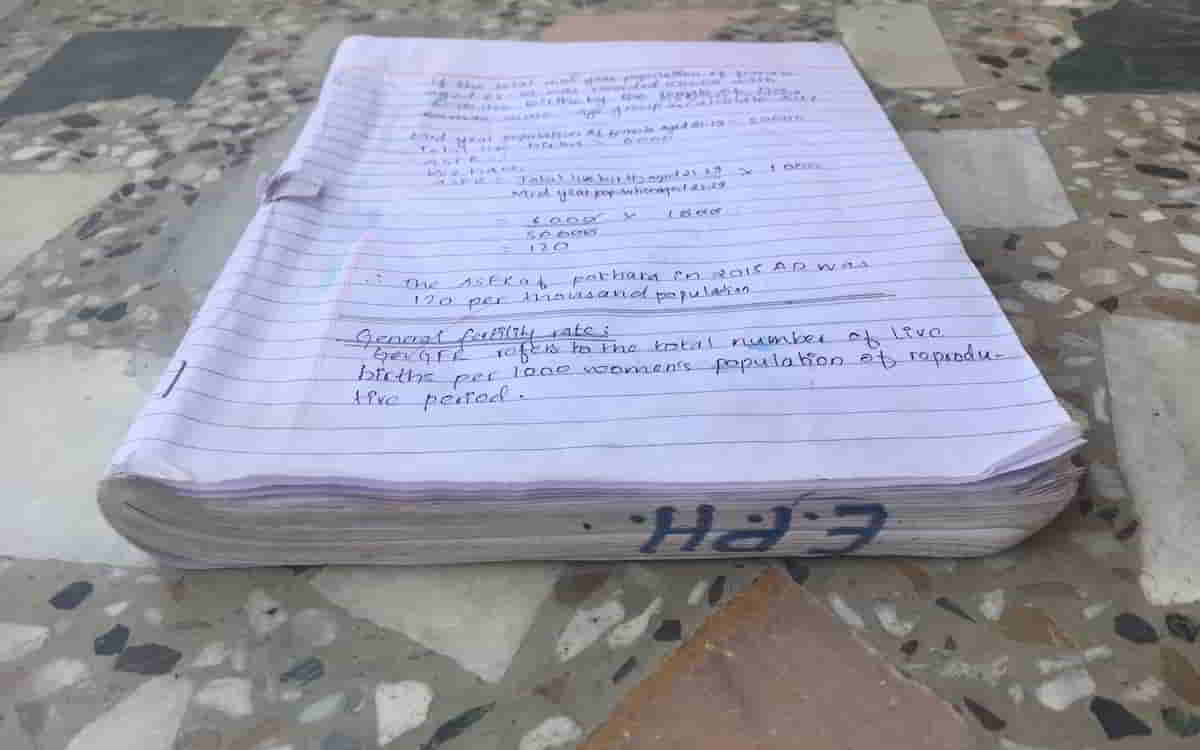
The image above is the notebook of either a 11-12 grade (sixth form) or undergraduate student. I came across it near Krazy Gecko restaurant and bar, near the lake, in Pokhara a while ago. It appears to be a “homework notebook” for the subject Environment, Population and Health (EPH). The notebook is completely filled with questions and answers, and it also includes red tick marks and comments, here and there, from the teacher.
It provides a glimpse into the pretty sad status of post-secondary education in the country.
To begin with, there are four categories of questions three of which are fine. The fourth one is “Write short notes on….” If you only know English, you wouldn’t know what that means. What I mean is, if you were given a question such as “Write short notes on the environment” what would you write…unless you have had practice with writing them. In other words, if you have memorized both such questions and answers to them, only then would you be able to answer such questions. For someone just going by the meaning of the words, of course you wouldn’t know how to respond.
The wording of the questions, most often, are very very confusing. Here are some reproduced verbatum, down to the punctuations accompanied by my comments.
- What do you mean by dependent population? (That phrase “What do you mean by” appears a lot in questions. Where did they get that kind of wording from? Is it a poor translation from what would pass quite well for a question in Nepali?)
- List down the demographic process measures and components. (I don’t quite understand what it’s asking.)
- How is our culture affected RDG? Define. (Again, is that even English? Or maybe if I knew what RDG stood for I would understand the question?)
- List any five impact on the environmental aspects because of rapid population growth and describe any one. (You can make out what it’s trying to ask but quite a convoluted way of going about it.)
- What do you mean by population management! Define. (See what I mean?!)
- How is the quality of education affected because of RDG. (Bewildering! Again, maybe that’s how it appears to me simply because I don’t know what RDG stands for. But the student knew how to answer it; I have reproduced it below.)
- How are political and psychological aspects interrelated with health population and environment? (Again, I am not sure I understand the question at all.)
- What do you mean by regional balance in development? Justify with examples. (See what I mean…again?! If I were to answer the question by describing what it means to me, it would probably be wrong! 😀 😀 )
Let me next move to some of the contents of the the notebook. I challenge you to make sense of the questions and the responses! The first one is a “Write short notes on” question. It asks the student to write notes on “Socio-cultural aspect of Environment.” The student starts off by declaring, “Socio-cultural aspects are related to the gifts of our ancestors that we follow till now.”

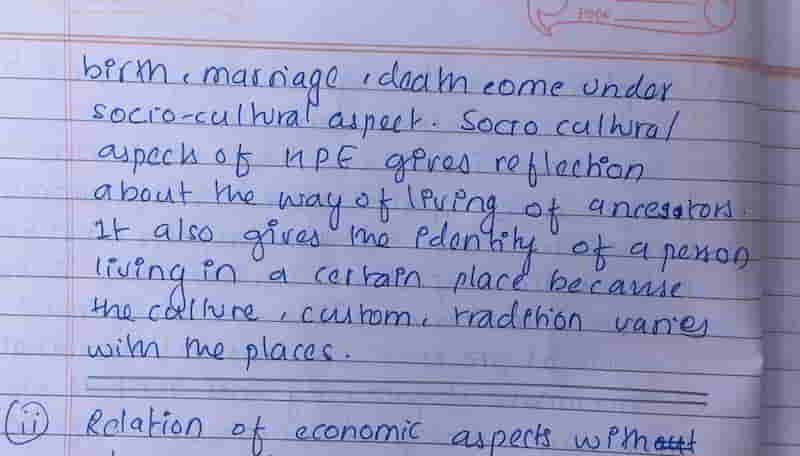
Here’s another one which asks the student to illustrate a relationship. (Here what I thought was RDG looks more like RPG!)
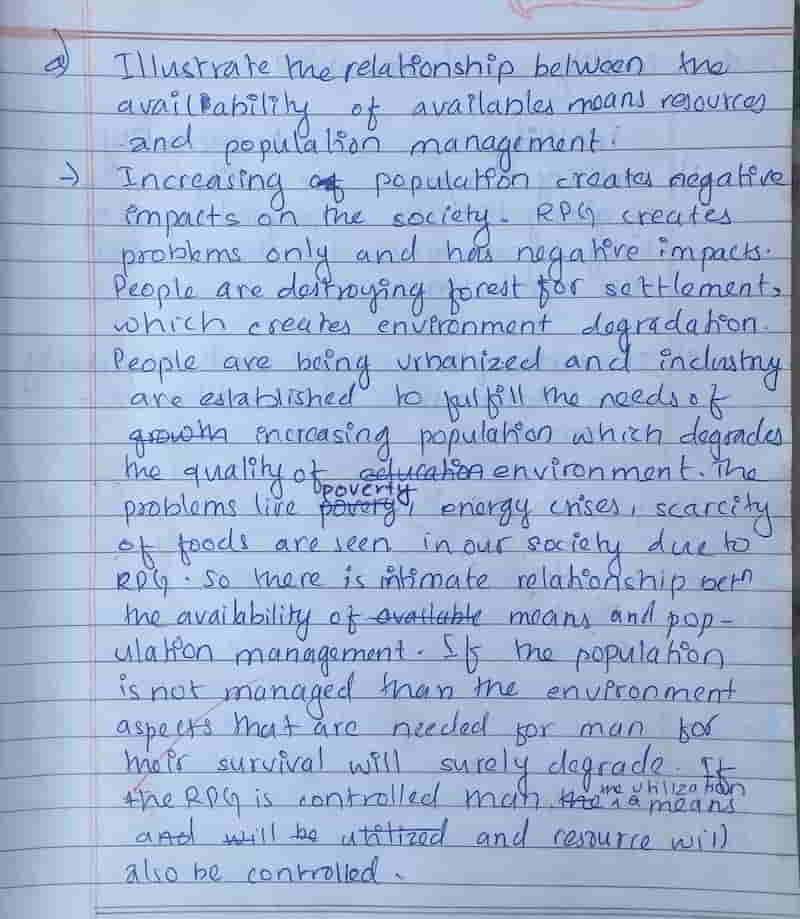
This one is about quality of education and RDG (or RPG). The student starts the answer by declaring, “Education is the light of human life and the first step towards the career development but the quality of education affected because of RDG.”
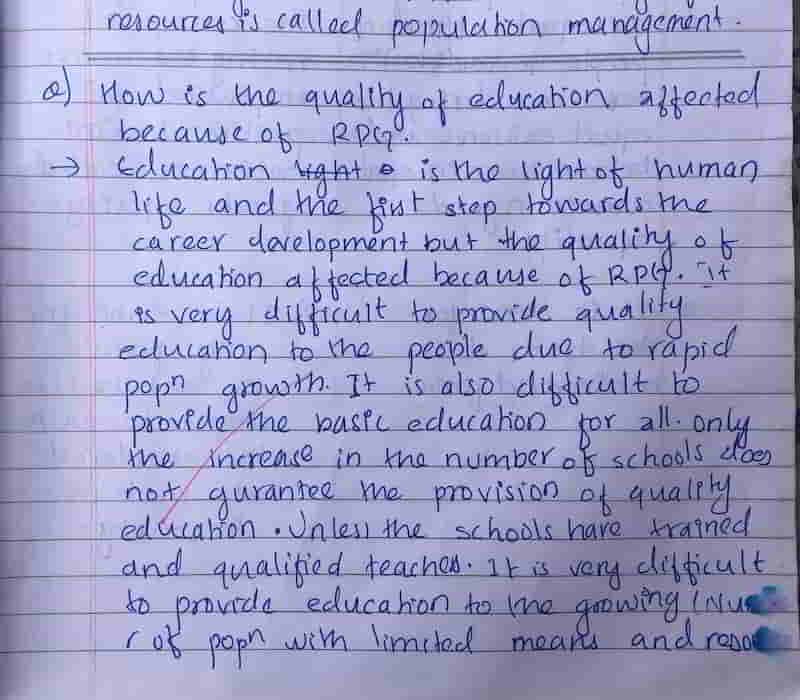

Here’s another one which declares gender equality is “The equal attitude of people towards both sexes”…. Again, I challenge you to try to make sense of the entries!
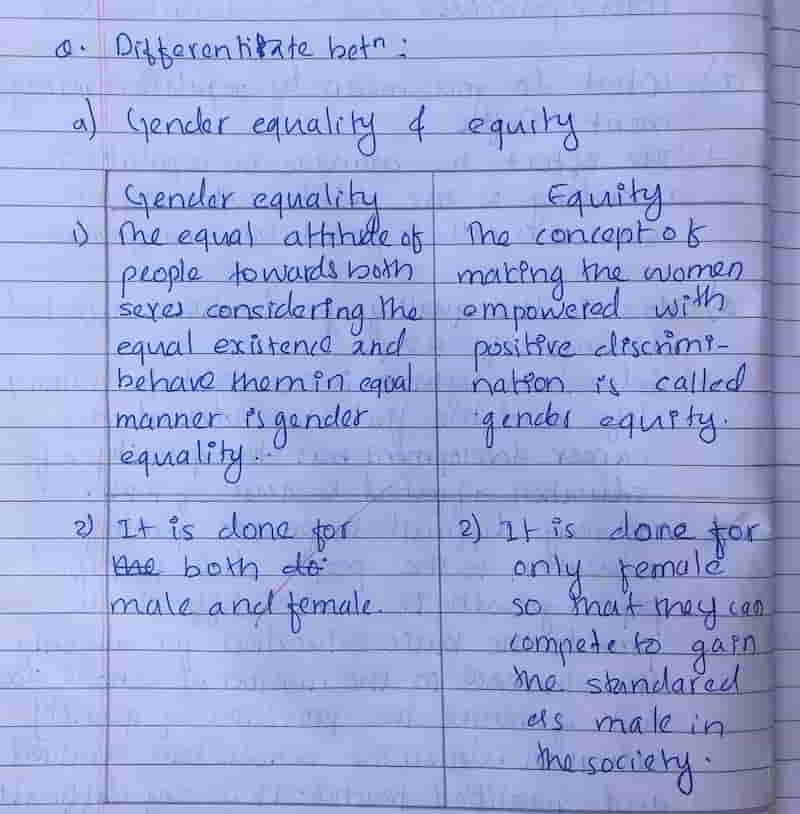
The following one is a question on “preventive measures of STIs and STD’s.” The student has been taught to declare, “Sexual behaviors before matured age are unsafe. Therefore, we must avoid sexual intercourse in early ages in order to prevent STIs.” I am assuming “matured age” is past the teens!
This in a country where, according to the 2011 census report, 74% of married women in the country had been married (off) Before their twentieth birthday, that is during their teenage years! But then again, the assumption must be that sexual intercourse with a husband cannot be “unsafe.” Incidentally, most marriages are arranged and it’s possible that the couple might not have really had much time together, or even have met, before the wedding.
Additionally, culturally the bride is expected to be a virgin at the time of the wedding but NOT the bridegroom.

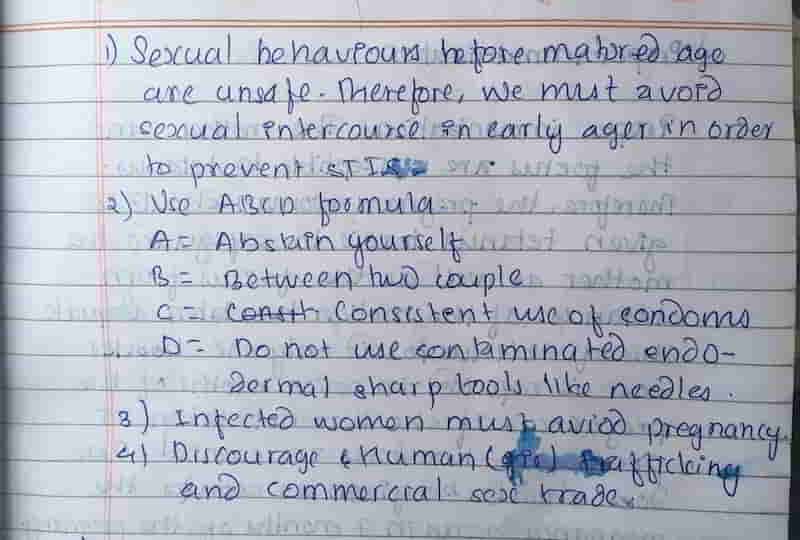
And finally a differentiation between “Natural contraceptives [sic] methods & Artificial contraceptive methods.” The student declares that natural contraceptive method are…natural contraceptive methods! If I had to guess, the students were probably not taught about the withdrawal method, for example, and the full details of what it entails because either the the teacher may have been too embarrassed to go into the details or the curriculum simply does NOT require it.
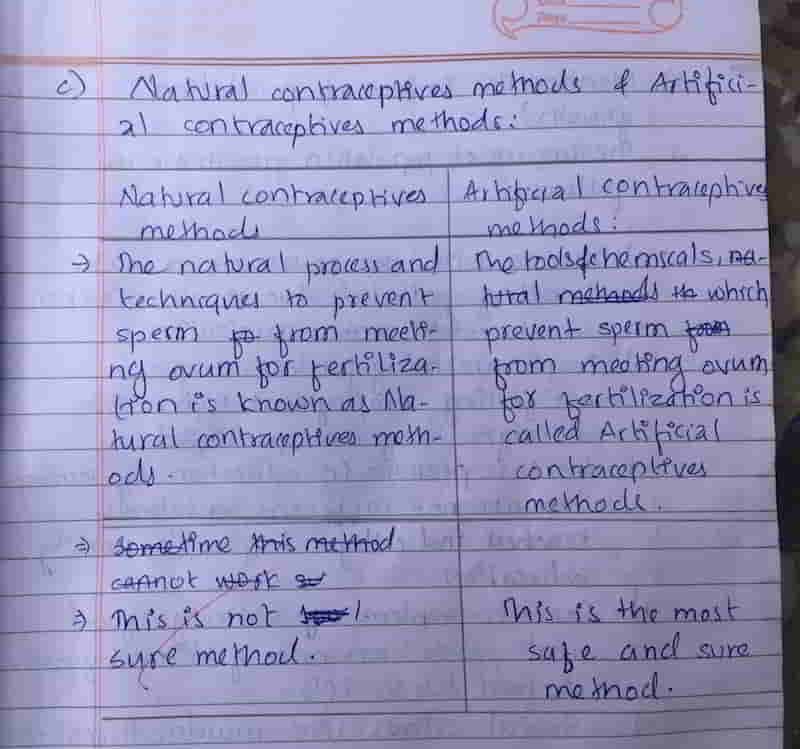
So, when pretty much the only thing that Nepali students are taught is to memorize questions and pre-set answers to such questions, of course, neither of the two really need to make any sense, and they don’t! The red tick marks of course indicating that the teacher has deemed them correct just goes to show that! As long as the students memorize them, they will be in good standing for tests and examinations.
The image below is that of an undergraduate paper. Though for a different subject, I am sure you can see the correspondence between the above and it, both in terms of the horrendous English and others. I couldn’t stop shaking my head when I first came across it. Read it and see if you also can’t!
Apart from the abysmal language, just a few comments from my side about the paper. The examiner loves the word “about.” The paper actually encourages the students to “give their answer in their own words as far as practicable.” The markscheme for most “Group B” questions, to me, makes no sense. But then again, I am willing to concede that that maybe more a reflection of my lack of knowledge and understanding of the subject rather than anything else. And, finally, why would you have questions (referred to grandly as “Analytical Questions”) that are worth 15 marks in a sit-down examination?!
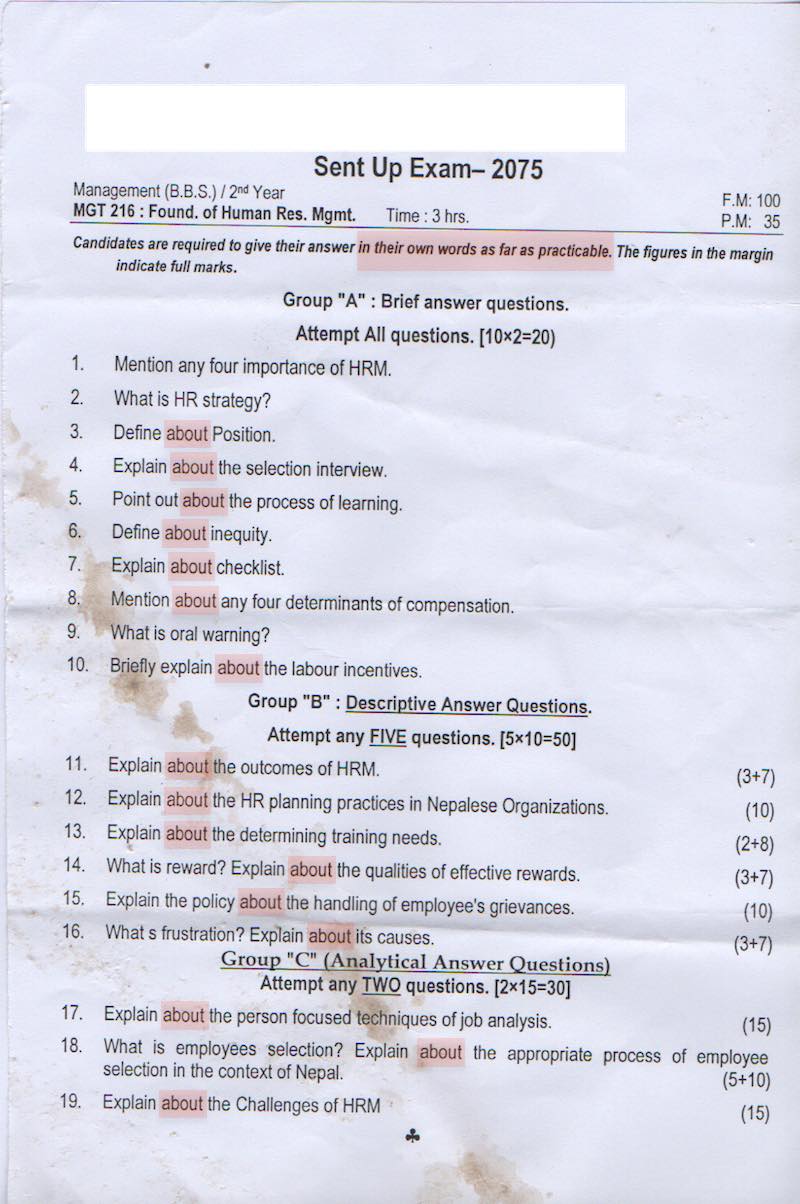
The only way to prepare for such an examination paper is exactly the way that student, who the notebook belonged to and pretty much all students in the country, is preparing: by memorizing.
To give an example from my own experiences…when I would ask questions during sessions I had for secondary science teachers, more often than not, they would answer them by either invoking a theory or making some factual statement. In the session on Some Light Magic, for example, I place a coin at the bottom of a bowl in front of the hall. Of course no one is able to see it. I follow that up with a simple question: “Why can’t you see it?” Invariably, one of the answers I keep getting has been, “Light travels in rectilinear path.” True statement but does not answer the question! The question is actually testing their ability to apply that fact to a specific context. But then again what does one do apart from that which one has been taught or has learned?! If all you have been taught to do is to regurgitate theories, principles, facts, and figures, what else can you do?!
(Incidentally, in all my teaching, I have never used the term “rectilinear” when all I wanted to say was that light travels in a straight line. That is a whole another issue all together.)
All post-secondary school education — past grade 10 — in the country, as far as I know, is in English. But not all primary and secondary school in the country is English medium. While all private schools are likely English medium, most public schools are Nepali medium. However, a vast majority of students — 80% if I remember correctly — attend public schools.
So, to begin with, most of our students are ill-prepared for an all-English curriculum when they transition into grades 11-12 (sixth form) and beyond. If the questions both in the notebook and the examination paper are anything to go by, the level of English language mastery of teachers and examiners themselves are — as you, I am sure, have determined — are abysmally poor too. What would the teachers be able to teach and the students be able to learn except to memorize and regurgitate?!
If I had to make a guess, our education system fails over 90% of our children that make it to schools, colleges, and universities. (I would love for someone to do a study of this!) A significant percentage never make it to school, and a significant percentage of those who do don’t finish school at all.
What do you think?
References
Added after the publication of the blog post because of relevance.
The Guardian (Feb. 15, 2019). Condom handouts in schools prevent disease without encouraging sex. “The research, thought to be the largest review of scientific literature on the issue, found that introducing condoms to schools reduced sexually transmitted infections (STIs).
The review recommended further investigation into the impact of school condom schemes on HIV and teenage pregnancies. Many of the studies were conducted in wealthy countries where such rates were already low, or where teenagers had access to other forms of birth control, researchers said.” [Added on Feb. 15, 2019.]
